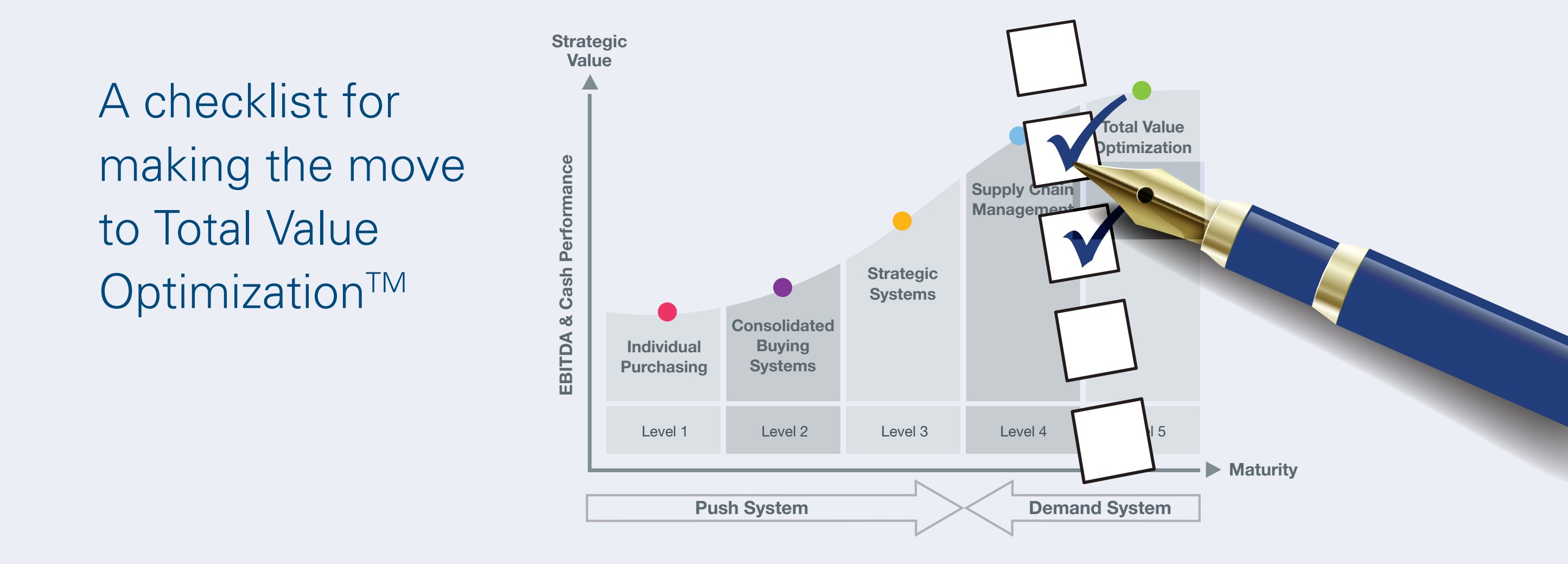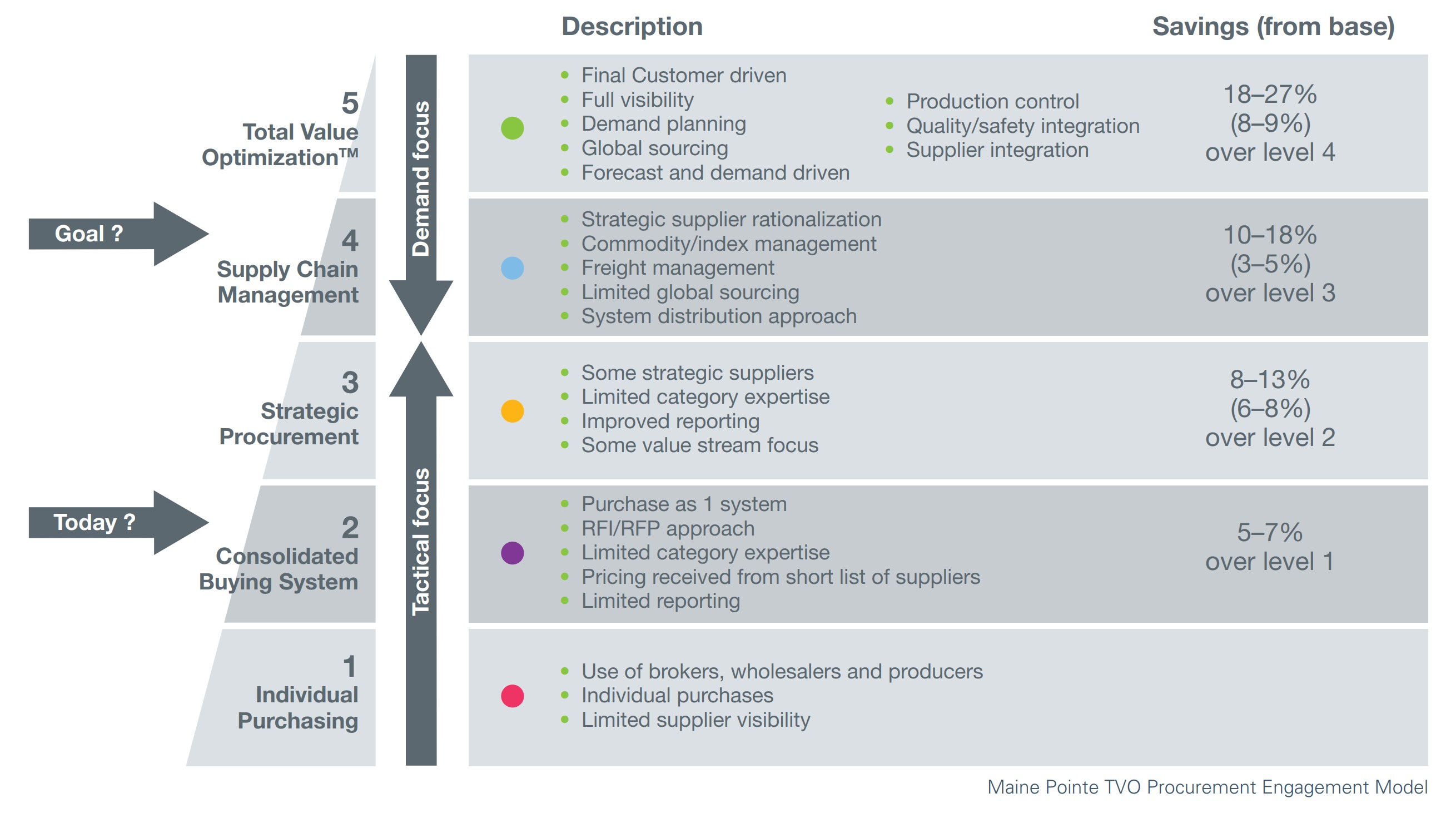Moving Beyond the Historic Orientation on Controlling Costs in Procurement
For decades, contracting companies relied upon a fairly simplistic, price based model of procurement. Purchases were straightforward transactions driven by internal requirements and buyers placed a high priority on the ‘errand’ of securing the lowest purchase price.

Total Cost of Ownership is no Longer Enough
Over the past two decades, price oriented decision processes have been superseded by the Total Cost of Ownership (TCO) model, whereby companies analyze multiple direct and indirect costs associated with purchases. For many companies, TCO led to an important breakthrough. Instead of reflexively buying the least expensive product, the procurement team looked at the total cost of a product over its lifetime – including the hidden costs associated with quality, durability, throughput, and yield. As a more comprehensive view, TCO represented a leap forward, but it is proving to be insufficient for meeting the demands placed upon companies today.
New Demands Make Change an Imperative
The new demands on procurement are based on several factors that include the changed nature of global competition, more complex supply chain operations, new risks from uncontrollable externalities, growing scrutiny around responsible business practices, and greater expectation for delivering tangible value to the end customer.
To ensure that procurement practices are aligned with the organization’s key business metrics, procurement professionals must secure their seat at the C-suite table for input on a wider range of strategic discussions. These include issues around value creation for the end customer, sustainability and corporate responsibility, license to operate and risk management, new market development as well as network optimization, and marketing and sales.
Companies must build a more durable foundation from operational agility and resiliency. By embracing a more strategic approach to procurement, they can cultivate relationships with suppliers capable of delivering continuous innovation, financially accountable sustainability practices, and tangible value to the end customer. This new imperative encourages open dialogue, team decision-making, and interdependent business relationships with a high degree of trust. By doing so, forward operating companies may transition away from many of the historic constraints to a new, differentiated model - a model we call Total Value Optimization™ (TVO).
Making the Change: TVO Priority Check List
Companies that want to make the move to Total Value Optimization™ need to:
- Practice procurement strategically – as value creation and optimization
- Cultivate a value-driven supply base
- Operationalize their values across the supply network
- Be ready for new challenges to supply risk mitigation
- Make organization resiliency a priority
- Manage the reputational fallout from any supply chain disruptions
- Respond appropriately, and with discretion, to stakeholder activism
- Be vigilant about impacts upon shareholder confidence and financial resiliency
- Be ready for new expectations of quality assurance and new requirements in sourcing safety
- Respect the “license to operate” norms in overseas or developing markets
- Expect to navigate increasing political, cultural, and legal dynamics when sourcing in volatile regions
Where are you today? Where do you want to be?
The TVO Engagement Model below will help you quickly assess where opportunities are in your business and help you ascertain where you would like to be:

